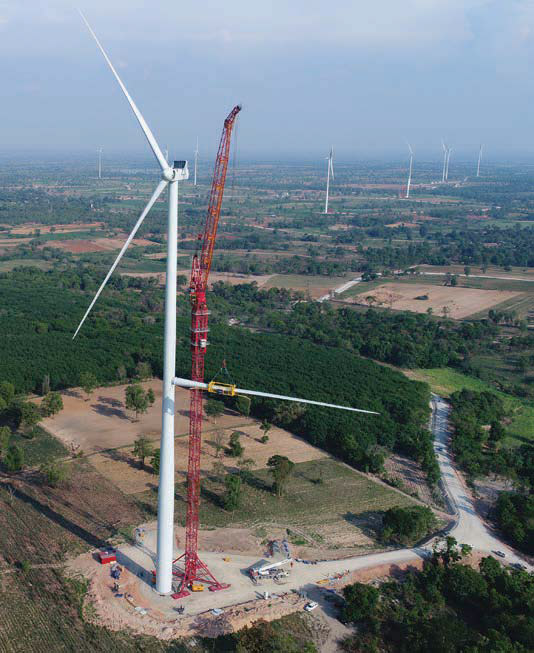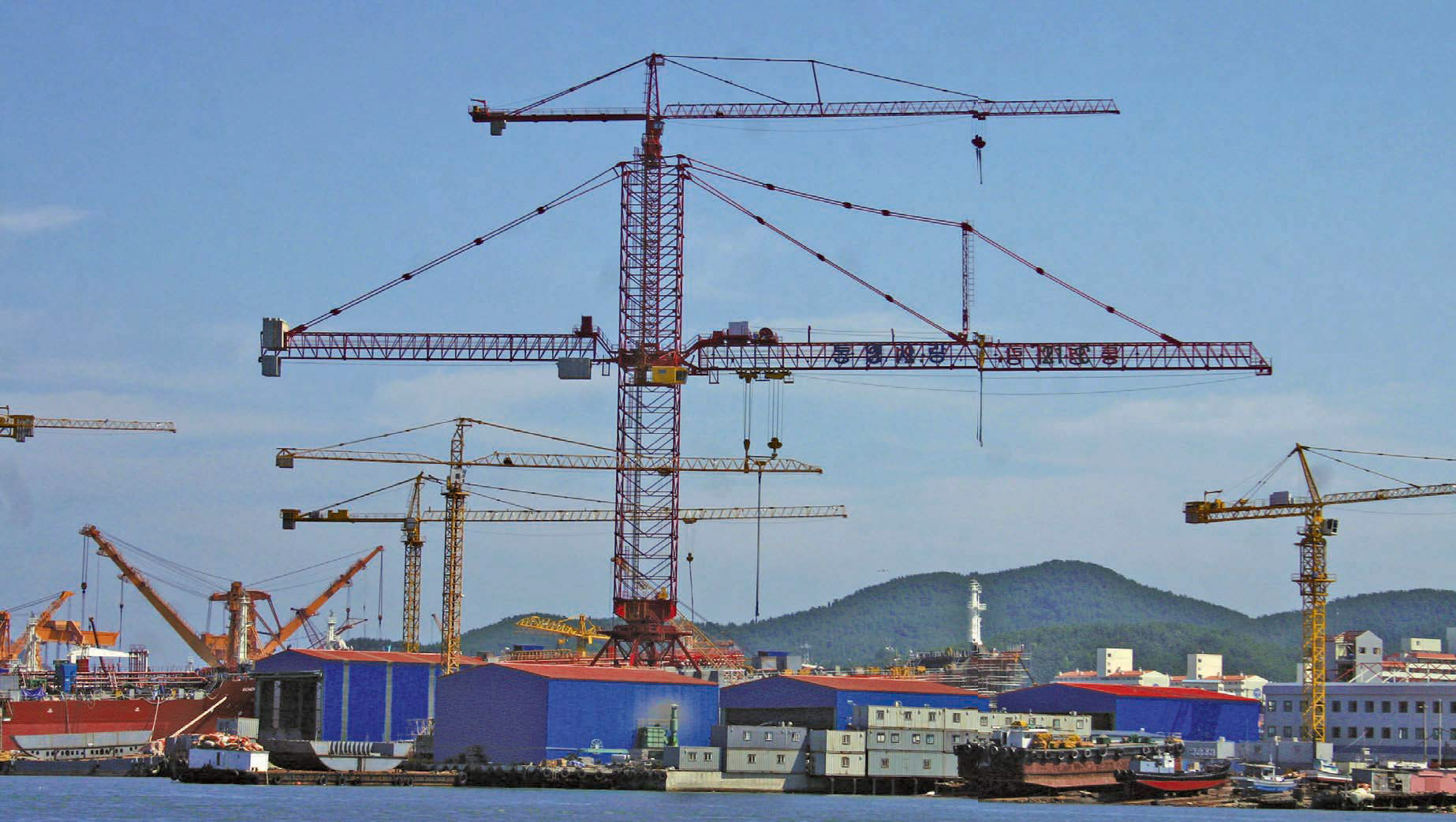Smaller, brighter future
22 August 2018Sotiris Kanaris visited Krøll Cranes in Lynge, Denmark, and interviewed managing director Henrik Nielsen about the company’s plans for the future.
Krøll was established in 1956, and was initially focused on the production of tower cranes and self-erecting cranes. A big turning point for the company was the production of the K10000 in 1976, which, Nielsen says, is still the world’s largest tower crane.
“A big tower crane at the time was 400tm, this was a 10,000tm crane. The company then decided to focus on these big tower cranes and changed its name to Krøll Giant Cranes,” says Nielsen.
In the decades that followed the manufacturer enhanced its range of heavy duty cranes, and they have been used in various applications around the world, including at shipyards, for wind turbine erection, and for bridge construction.
Nielsen says the wind energy sector will create many business opportunities in the near future. “We are working closely with all the wind manufacturers to fi nd out what they need. There are a lot of advantages of using a tower crane compared to mobile crane and crawler crane for this application. Turbines are usually erected in windy areas, which is a challenge for mobile cranes, whereas we operate up to 20m/s, or 15m/s with full load. We have delivered nine units up until now for turbine projects.”
The company’s expertise in complex infrastructure construction has proven valuable for customers. Nielsen says that for a bridge project the contractor did not think about the removal of ties and Krøll offered a solution.
“Sometimes the design of the pylon can be such that you can’t use the crane to remove the ties. We have put hook trolley systems on the counterjib so you can use the back of the crane to remove them once the structure has fi nished. We developed what we call the fi shing rod which is basically a small crane. You can put the crane sideways onto the pylon and remove the ties using the fi shing rod.”
The manufacturer has built a strong reputation for heavy duty applications, but this negatively affected its ‘standard’ tower crane sales. Nielsen tells Cranes Today that the current strategy is to regain and expand Krøll’s market share in this tower crane category, while still offering the heavy duty models.
“We have completely revamped our standard fl at top series and we are trying to become more competitive price-wise on these products,” he says. Among the new models are the 430F and 630F, while the fi rst unit of the 830F is under development. The manufacturer also offers a range of luffi ng jib cranes, with maximum load capacity of 6t to 24t.
Krøll has invested in enlarging its ‘standard’ tower crane rental fleet in Denmark, which now accounts to 45 units, some of which are rented in Sweden. “The idea is that we start at home and put as many cranes in our home market as we can and then expand to neighbouring markets,” says Nielsen.
Many of the units in the rental fleet are brand new, as they were manufactured for this purpose. Nielsen says they could be sold second hand, as Krøll has proved to the market that its products are robust and have a long life.
The most popular rental model is the 24t capacity K430F, which is an upgrade on the Krøll 330F. “In the past, in construction sites in Denmark you would find cranes in the categories of our 330F flat top or 320 hammerhead, or around 500–600tm. This crane model is between these categories and it appears to be the perfect fit for the current market demands.”
Krøll is part of Favelle Favco Berhad. Sister company Favelle Favco specialises in high speed diesel hydraulic luffers. For some projects the two companies collaborate.
“The wind turbine cranes are Favco upper structure with Krøll winches, control systems, mast and climbing system. Sometimes they ask us to manufacture undercarriages for them.”
With the security of being part of a big expert group and the investment in the fleet and product upgrades, the manufacturer is ready to re-establish its name in the standard tower crane market
ALE uses Krolls for wind projects
ALE has strengthened its global fleet with the addition of three Krøll K1650L cranes, which will be used for wind energy projects.
“The innovative K1650L crane has lifting capabilities like no other free-standing tower crane on the wind energy market, with an increased lifting height, and the ability to work at high wind speeds and with uneven or small hardstands,” said ALE.
The compactness of this freestanding pedestal crane means that civil works and costs are ultimately reduced, without the need to be tied-in to the turbine tower. The low counterweight, increased visibility and quick assembly functionality optimises overall project efficiency.
Thanks to the short 70m boom, the area to boom up and down can be significantly shortened, when compared to any equivalent lattice boom crane. This, together with the very short minimum boom radius, allows the developer to reduce the portion of land to be acquired and cleared. The crane can be transported and even partially rigged, reducing the relocation time.
Danilo Viappiani, regional engineering manager at ALE, said: “We work closely with our clients to understand potential challenges in the future, such as increased hub heights or heavier components, and where there is the opportunity to make time and cost savings.
The tower crane solution has lifting capabilities like no other on the market, and by investing in these cranes, it represents a further groundbreaking advancement in our step to become world leaders in the renewable wind industry.”
The cranes are currently being deployed at Wind Energy Holding’s Thepharak wind farm project in Thailand, where ALE has been contracted to provide the full-service TCI and BoP scopes. This includes the enhanced civil BoP and electrical installation services for 150 wind turbine generators up to 156.5m high.

